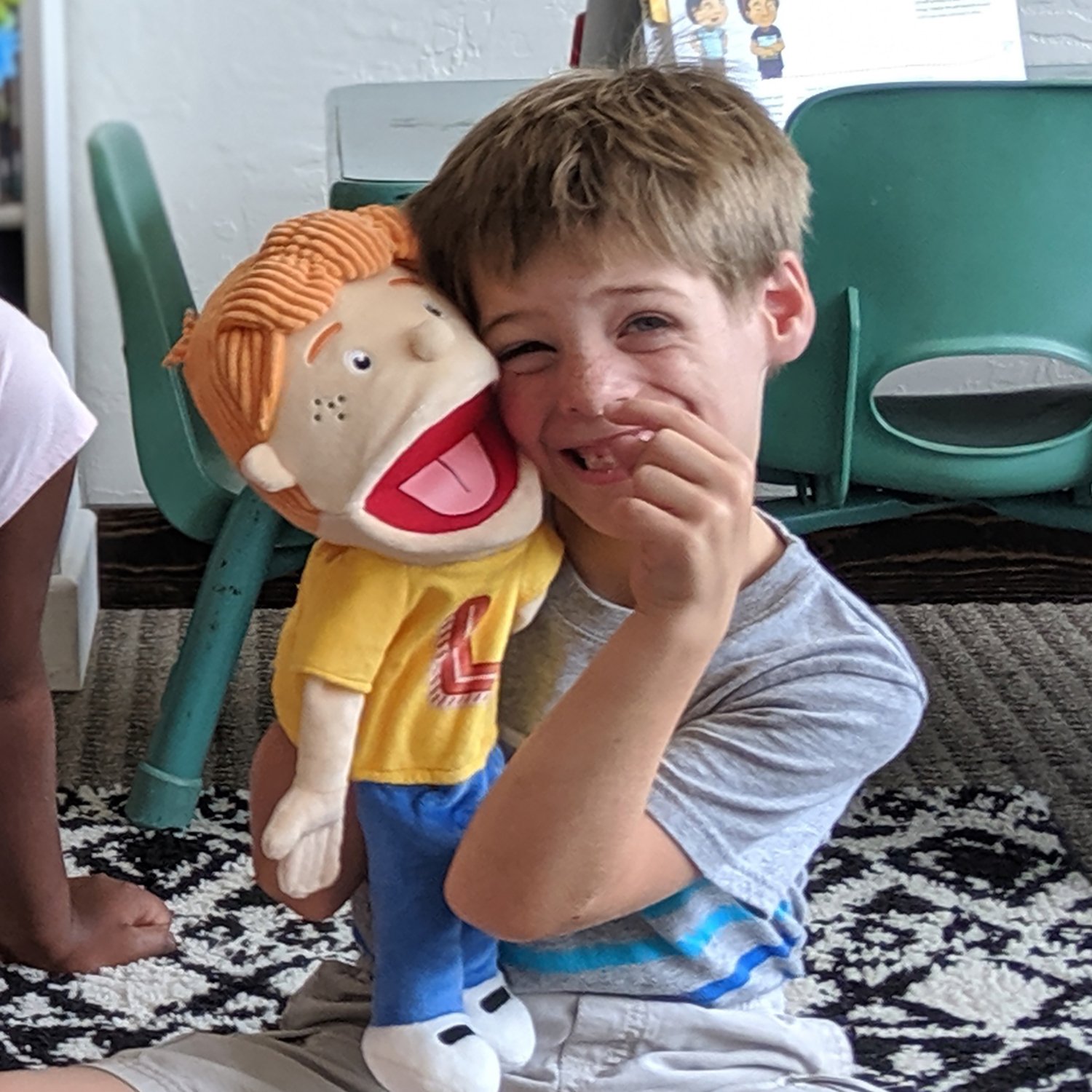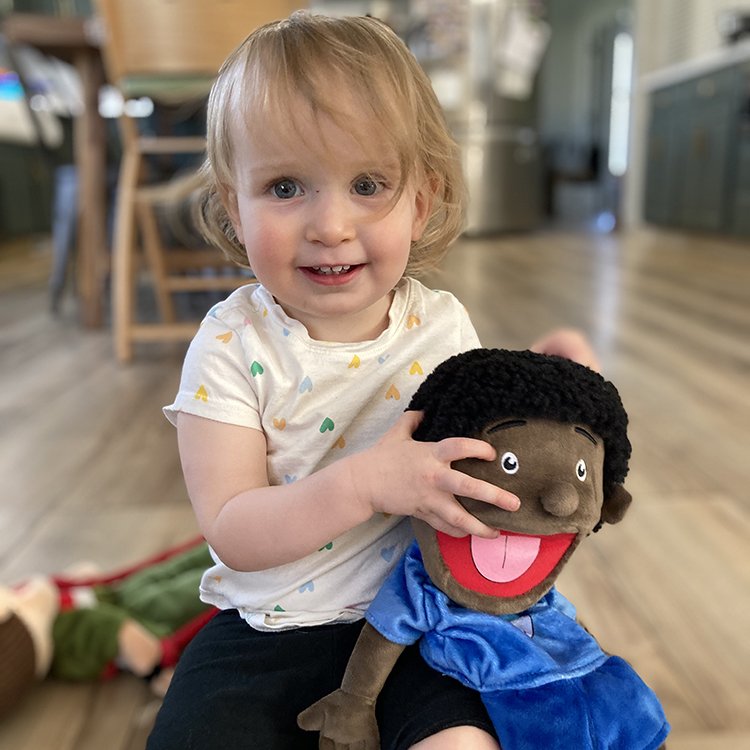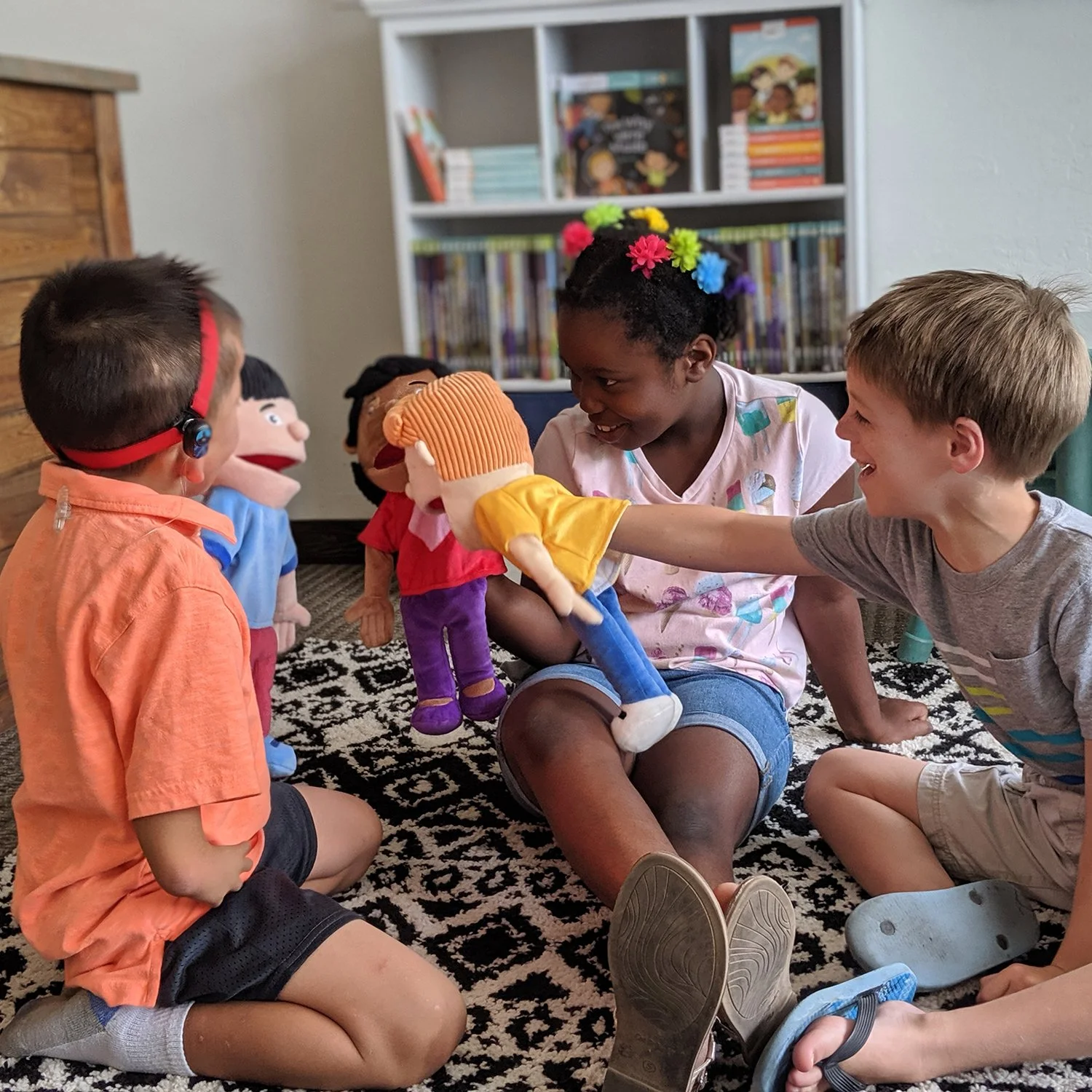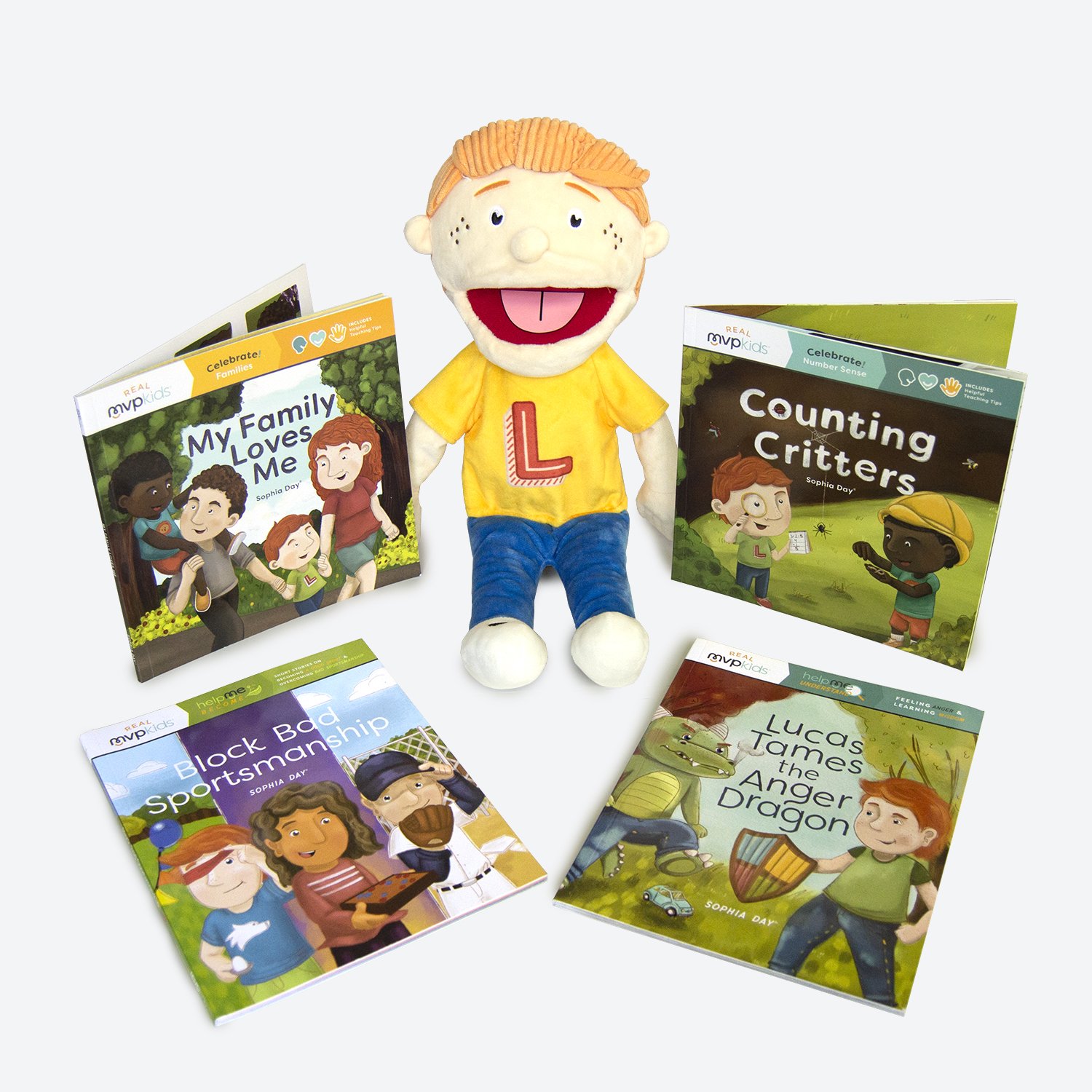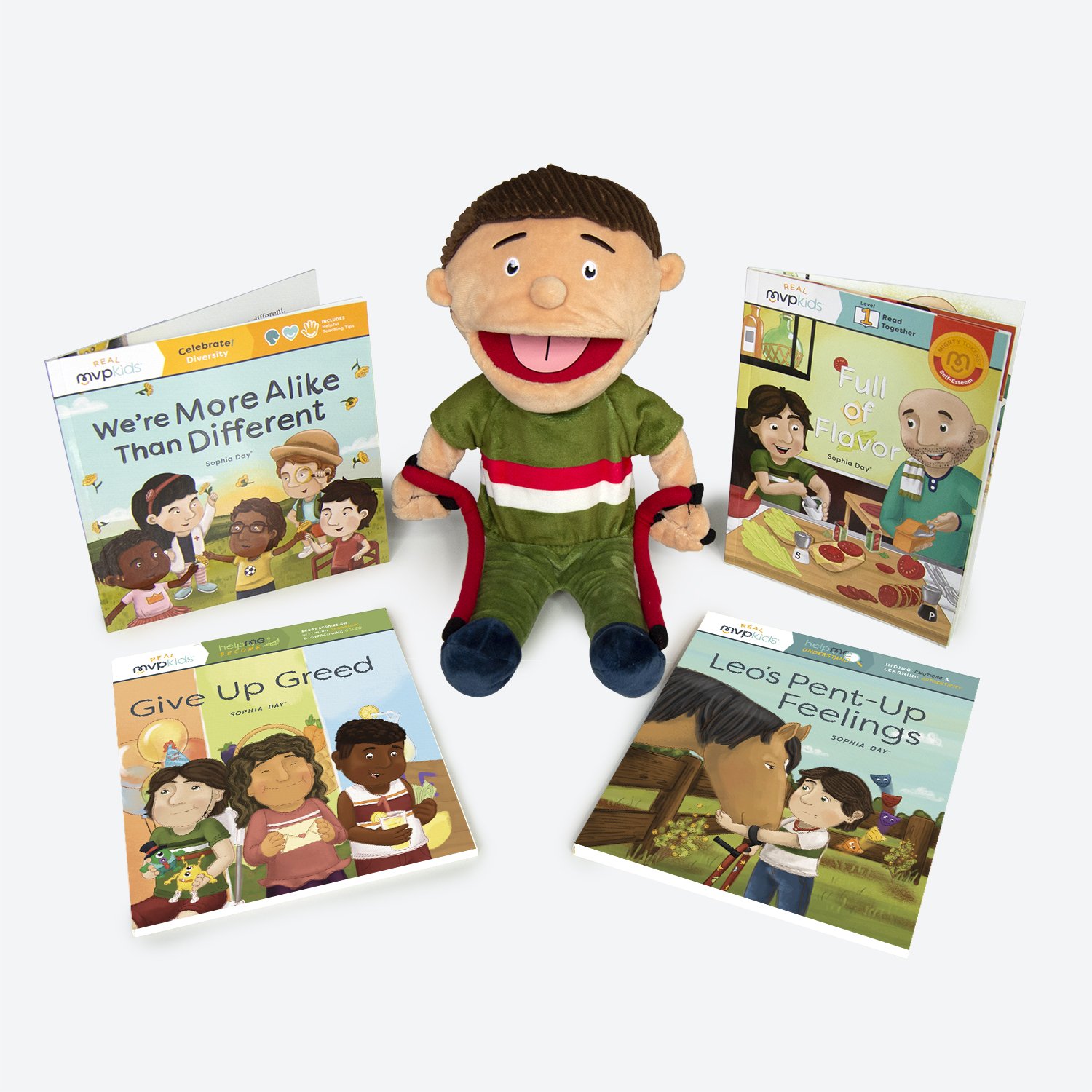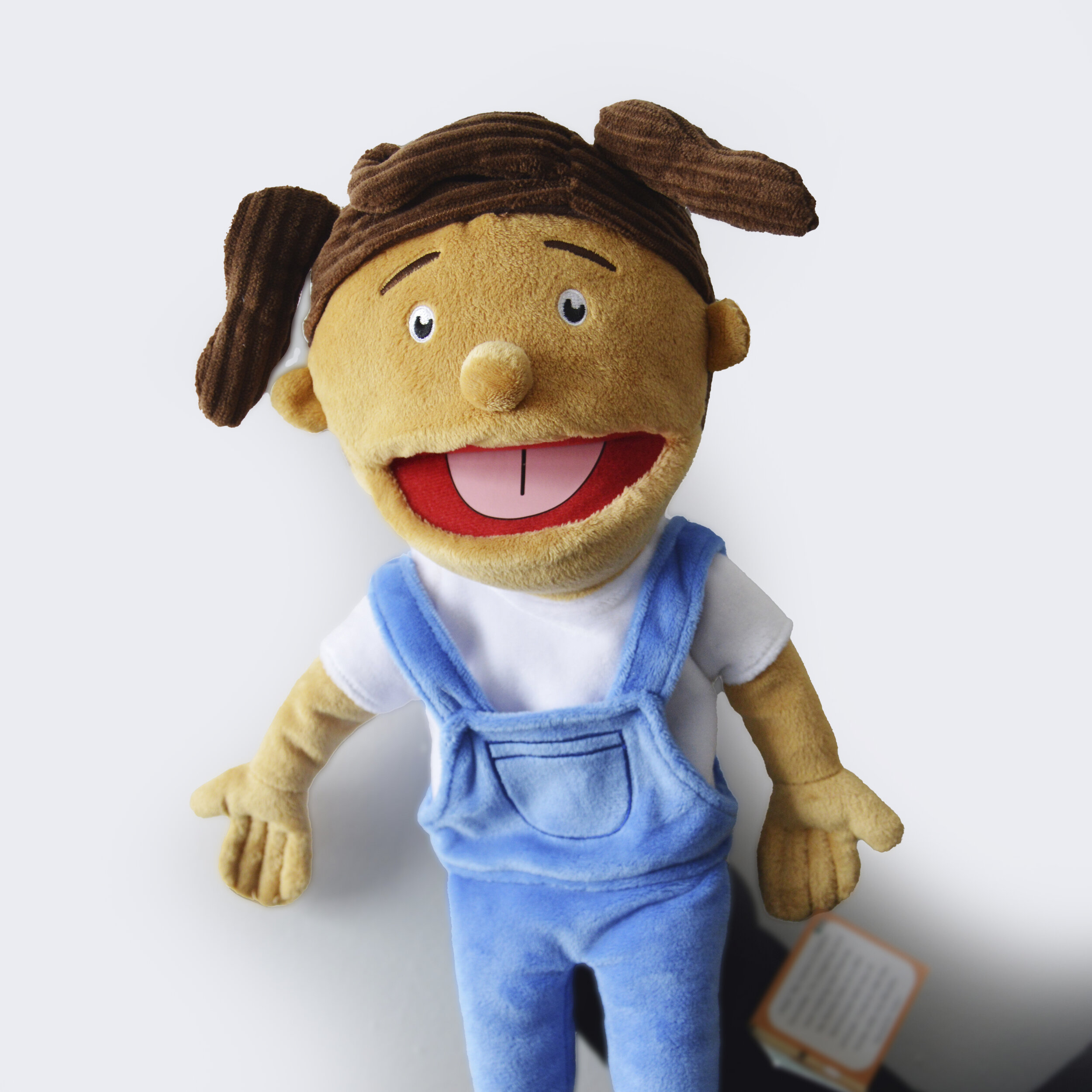Supporting Positive Outcomes Using Puppet Play
Something magical happened when I put a puppet on the hand of my quiet, withdrawn preschooler. At four, he dealt with frustrations bigger than his little body could handle. But when I slipped a puppet onto his little hand, he suddenly had a voice. His puppet could speak for him the things he didn’t want to say for himself.
“Oh, Lucas!” I said. “Why are you so upset today?”
“I want Papa,” the puppet replied with a sorrowful little voice. I didn’t know he missed them so much. He had never said so. But as our puppet play ensued, I learned something—Papa going back home was not just a transition for my son; it was a loss, a grief that needed to be processed, and the puppet gave him an outlet for it.
Puppet play is a valuable tool for children’s linguistic, social, and emotional development. A 2019 study showed that puppet interaction and puppet play had a significantly greater influence in promoting positive behavior changes than storytelling methods because “the use of this technique has engaged the child's imagination; hence, the training has occurred unconsciously. Therefore, the expected behaviors begin to develop in the child.”
How can caregivers support positive outcomes with puppets at different ages and stages in a child’s development?
Infants
Babies are wired to see and engage with people and faces with higher interest than with inanimate objects. Puppets are an excellent choice for infant play because the facial features are exaggerated. Use a puppet to play peek-a-boo, to sing to your baby, support tummy time, or to give baby gentle kisses. Mimic your baby’s babbling sounds with the puppet. Watch your infant’s interactions with the puppet and repeat those interactions that keep your baby’s gaze or cause him or her to giggle. Choose a puppet with good contrast in the eyes or eyebrows and the mouth. Puppets with soft features and varied textures will be engaging for all of baby’s senses. All of our MVP Kids puppets meet safety standards for children under 3 years of age.
Toddlers
Children ages 1-3 are meeting new challenges as they learn to talk, walk, potty, take turns, and influence their world. Use puppets to mirror your child’s feelings and talk about them. A puppet can help a caregiver become a playmate and engage in pretend play as an equal. Caregivers can use the puppet to encourage turn-taking, handling disagreements, and building social skills. Choose a plush puppet that can also be played with as a doll. Dressing, feeding, caring for, and playing with puppets like a doll furthers fine and gross motor skills and promotes healthy attachment. All of our MVP Kids plush puppets are machine washable and ready for all your toddler’s adventures!
Preschoolers
Ages 3-5 have growing vocabularies and more mature sentence structures than toddlers. Allowing your child to speak for and to a puppet encourages their communication skills. Puppet use increases a child’s interest in practicing social skills, allowing caregivers to repeatedly target a child’s needs in a fun and engaging way. Use puppets to dialogue with your child about a book you have just read, a situation that just occurred, or to prepare for an upcoming event. As in the example above, allow reluctant communicators to use a puppet to discuss emotions and process feelings, challenges, or traumas they might have experienced. By entering into imaginative play, the child will be more relaxed and receptive. Consider building a puppet theater out of a cardboard box or using furniture and other items to create a puppet play space for more elaborate storytelling and roleplay.
Choose puppets that your child identifies with or sees as a friend. Our MVP Kids puppets mirror the characters found in our books for infants through tweens and provide a basis for growing friendships. Which character does your child connect with the most?
Elementary and Up
The way children interact with puppets may change as they enter elementary school age. Turn the tables and encourage your child to take on the leadership role with puppets. Encourage your older child to create a script for multiple puppets or to lead a younger sibling through roleplaying a situation. Your child might work their puppetry skills into a school presentation, book report, or vlog. Even elementary-aged children continue to learn well through imaginative and dramatic methods that cause them to relax, laugh, and have fun. Have your child create a puppet show explaining a new concept learned in science or to reinact a historical event they have studied. In my household many a pre-teen bad mood has been be broken by a knock on the bedroom door by an old favorite puppet friend telling them to cheer up!
No matter the age of your child, using puppets changes the status quo of parent-child interactions. Puppets can pleasantly surprise a child who is on the defensive or stuck in a challenging mood and turn any interaction into engaging, relational play.

